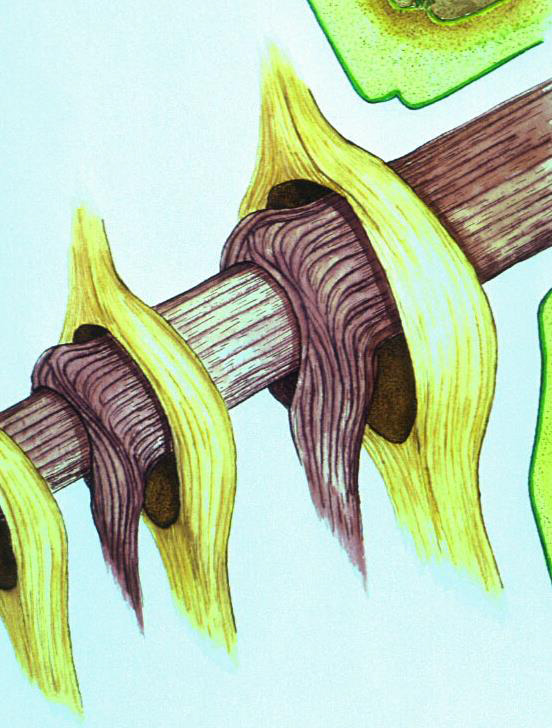In the picture to the right, Dr Shigo shows the progressive clamping of branches to trunks. The outer current growth ring forms a “Cylinder” around the previous years of growth. Where the branch meets the trunk “Cylinder” the branch “Cylinder” unzips at the top and forms a “Branch Sheet” of tissue over the top of the last trunk “Cylinder”. This sheet gradually diminishes in width as it extends down the trunk “Cylinder” surface. The larger the branch is the longer the taper area extends. Later in the growth season the trunk wood forms and the trunk “Cylinder” over-grows the “Branch Cylinder” at the base and over the Branch Sheet”.
This is a strong union, and while trunk and branch are both growing well will increase in strength with each growth increment year by year. If however the branch declines, for whatever reason, the increment of growth of the branch slows in proportion to the trunk. This branch growth decline is manifested by less tissue being added with each consecutive growth flush. There are thus less vessels and they are usually thinner as well. When such “Branch Sheets” overlay the “Trunk Cylinder” there are fewer connections between the lower tree and the branch. Fewer connections mean less nutrients and water to sustain the branch, so the branch rate of growth further declines, however, the trunk rate of growth may not change – in such cases pronounced branch collars form at the base of the dying branch.

The Diagram to the right shows the Branch Attachment from his CD of 5000 Items or Research and travels worldwide.
